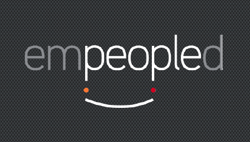 A Q&A with Hazelcast founder and CEO Talip Ozturk. The Palo Alto-based startup, which offers an open source In-Memory Data Grid for Java, raised $2.5 million in late September—it’s first institutional funding round. Investors include Bain Capital Ventures and Angel investor Ali Kutay. It was founded in Istanbul in late 2008.
A Q&A with Hazelcast founder and CEO Talip Ozturk. The Palo Alto-based startup, which offers an open source In-Memory Data Grid for Java, raised $2.5 million in late September—it’s first institutional funding round. Investors include Bain Capital Ventures and Angel investor Ali Kutay. It was founded in Istanbul in late 2008.
SUB: Please describe Hazelcast and your primary innovation.
Ozturk: Our vision is that any commodity computers can be turned into a mainframe-class HPC (High-Performance Computing) supercomputer. What Hadoop did for data warehouse, we will do for mainframes.
You can take any kind of computer network with any devices that can run Java—just about anything—and through a simple, free download and install you get a supercomputer-class ‘virtual machine,’ complete with symmetric multiprocessing and pooled memory—RAM. Like Hadoop, you can use open source to turn commodity hardware into enterprise-class computing, which gives you open, low cost, and easy-to-use software which transforms the enterprise capital investment in hardware. This software is free and open source, provided under the Apache license. This means that any programmer can take a data center full of racks and racks of commodity servers and turn it into a single virtual supercomputer for free.
For memory and compute-intensive programming problems, this is a great breakthrough in both cost of ownership—the software is provided for free—as well as ease-of-use. Programmers can download a small library of less than 3MB, and put it into their programming environment and they are ready to go. It takes experienced developers a matter of minutes to set up.
SUB: Who are your target markets and users?
Ozturk: We like big investment banks, many of which already run Hazelcast.
Anyone who uses cloud computing or has a datacenter can benefit from Hazelcast. So far this has included some of the world’s biggest technology companies, ecommerce companies, telecoms, network equipment vendors, gaming, governments and some major open source projects.
Hazelcast the company supports anyone who uses Hazelcast—freely on our Google Group, but professional support is provided to paid customers, including 24×7 support.
We also have as well a Management Console and Enterprise Edition of our product. So our target market is enterprises. Anyone with a network of computers who wants to harness this resource for a cheaply- and rapidly-scalable solution for applications should be using Hazelcast. But we’re increasingly seeing a whole different class of customer coming in—these new customers just want to replace Oracle Coherence with Hazelcast. We expect that open source will create a big impact for a lot of customers of high priced solutions from Oracle, VMware and Software AG.
SUB: Who do you consider to be your competition, and what differentiates Hazelcast from the competition?
Ozturk: Hazelcast competes with proprietary solutions such as Oracle Coherence, Pivotal VMware Gemfire, and Software AG Terracotta.
The biggest differentiation we have from these competitors is our ease-of-use and low cost of ownership through open source. Oracle Coherence is a pretty nice piece of software, but expensive, and costly and complex to administrate. Since our solution is open source, we can provide our solution at a much lower price point that these large companies. In addition, our solution is newer, which takes advantage of advancements in our field. Once a source code base starts being sold by large enterprise software companies, innovation tends to slow down significantly. Part of that differentiation is seen by how easy Hazelcast is to use compared to Oracle Coherence, for example. We are beginning to see customers who want to replace Oracle Coherence with Hazelcast.
SUB: You recently announced that you’ve raised $2.5 million in funding. Was this your first round of outside funding?
Ozturk: This was our first institutional round. We have had Angel investors that have been with us since before this and we expect will continue to support the company.
An example is Ali Kutay, former CEO of WebLogic—sold to BEA/Oracle. Ali has been an Angel investor with Hazelcast, and he continues on our Board of Directors in his support for the company.
One of the great benefits of having such experienced Angel investors is the guidance about what kind of institutional investors to bring in and how to manage that process. This results in our ability to bring in seasoned open source investors like Salil Deshpande, who invested in SpringSource, MuleSoft, Engine Yard—Ruby on Rails, Groovy and Grails, Maven, Datastax—the company behind the open source Cassandra NoSQL database; and Rod Johnson, who created the open source Java Spring Framework, acquired by VMware. It also helps a lot that the company is seeing great growth in revenue. This means we are raising money to accelerate, not to survive.
SUB: Why was this a particularly good time to raise funding?
Ozturk: The In-Memory Data Grid space is taking off right now.
Gartner says it will be a $1 billion dollar market by 2016, growing at a compound annual growth rate (CAGR) of 43 percent. The idea of shared memory pooling and large RAM-based computing is not a particularly new one. But what is exploding right now is ‘big data,’ powered by storage systems like Hadoop/HDFS and applications like mobile Internet, targeted marketing and advertising, financial modeling, and dozens of other applications. Hadoop/HDFS is good for batch processing, which is ideal for reports where you can afford to get results in 12 hours or 24 hours. But conventional applications are drowning in data, and the ability to apply ‘big processing’ to all of this ‘big data’ is going to create a huge tailwind for In-Memory software vendors.
The price of RAM memory falls exponentially over time, and of course that means the availability of RAM for commercial applications grows exponentially. Hazelcast is in the right place at the right time to ride this wave.
SUB: How do you plan to use the funds?
Ozturk: We want to build the best enterprise software in the market, so we will absolutely be hiring the best engineering talent and growing our team that supports customers.
We know that large customers expect to be served by serious software companies, and our growth will help serve them better. In addition, we will be growing in sales and marketing. We know there’s great demand for what we have to offer—we have been doing ‘organic’ open source marketing and just letting customers come to us. This has gotten us to where we are now.
By expanding those functions, we will increasingly see more competition between Hazelcast, Oracle Coherence, Software AG Terracotta, and Vmware Gemfire.
SUB: What was the inspiration behind the idea for Hazelcast? Was there an ‘aha’ moment, or was the idea more gradual in developing?
Ozturk: I spent a lot of time studying every single major open source project I could find on all the popular sites. This helped me really understand what people were trying to do. Evan Williams, the founder of Twitter said recently that: “The Internet is a giant machine for giving people what they want—it is not a utopia. If you understand this and serve this purpose well, you will succeed.”
One of the big areas where I saw so many people struggling was the area of distributed computing. If you’re a big company who has paid for lots of computer hardware, how do you get the most competitive value out of this investment? How do you get commodity hardware to act like expensive and proprietary mainframes? I know this is a complex topic, but would it be possible to solve this in a way that makes it simple for the developers?
Some of the things I insisted on since the beginning were: 1.) Just one Java JAR file with no dependencies—this means developers just put this in their CLASSPATH (Java library), and suddenly they get distributed map, distributed queue, distributed lock, Distributed Executor Service, and lots of other great classes for free; 2.) Free and open source—no complexity of buying or ownership, Apache 2 license just like your web server, just download it and use it; 3.) Pure Java—talk to a huge cluster the same way you would talk to a normal Java object sitting on your PC.
SUB: What were the first steps you took in establishing the company?
Ozturk: I started the project in 2008, released the first four versions of it before establishing the company.
I wanted to see the reaction and feedback from the developer community. It was kind of testing to see if there is a market-fit. After seeing the great attention from our early users, we first established the company in Istanbul, Turkey. Couple of years later, it was clear to us that we should move the company to the U.S. to be closer to our users and customers. So, in the summer of 2012 we moved the company to Palo Alto, California. Since then we have raised our first round of venture capital out of Silicon Valley.
SUB: How did you come up with the name? What is the story or meaning behind it?
Ozturk: I had rules for the name: 1.) it shouldn’t be long; 2.) easy to remember, so no made-up name; 3.) domain availability; 4.) has to have some data distribution feeling and sound.
It was super hard to find a name, mostly because of the domain availability. One day, a friend of mine suggested creating a combination of two words, one with a color. I picked ‘cast’ as one of them as it has this ‘multicast,’ ‘unicast,’ ‘broadcast’ data distribution sound. Then I picked the color ‘hazel’ because it is the color of my wife’s eyes. I was lucky to have the ‘hazelcast.com’ domain available. So, now we have ‘Hazelcast,’ a colorful way of distributing data.
SUB: What have the most significant challenges been so far to building the company?
Ozturk: You have to understand our humble beginnings. I don’t come from a wealthy family. We don’t come from Silicon Valley or from the culture of technology. My process has always been to keep learning, and constantly be working hard to learn new things, learning advanced concurrency methods in Java, learning about open source, learning how to raise venture capital, learning English.
It’s hard for me to point to any one thing that has been a huge challenge, except for maybe some of the early technical breakthroughs that led to the product as it is today. Even though the technical team has been small so far, our software has been running in production at many major banks and technology companies at a very large scale running extremely mission critical projects.
It’s absolutely true to say that billions of dollars worth of transactions have already flowed across Hazelcast, and we truly expect it to conduct trillions of dollars worth of transactions.
Supporting the early customers with very few technologists required us to build an extremely modular and clean architecture. Achieving this has been hard, but I feel with Hazelcast three we have achieved this and are in a strong position to scale up and serve more customers.
SUB: How do you generate revenue or plan to generate revenue?
Ozturk: Our business model is very simple and proven. We build tremendous value in our Hazelcast Community Edition—thousands of people are using it in production today across many enterprises, carrying billions of dollars worth of transactions.
We provide several tiers of support, including 24×7 production support, paid on a per-node basis.
By now, we have seen many open source companies go to profitability and beyond by providing professional open source, and we plan to follow this plan. We have extremely experienced executives on our board and management team, including Rod Johnson, creator of the Spring Framework and Founder and CEO of SpringSource; Salil Deshpande, investor in Maven, SpringSource, MuleSource, Grails, and many other successful open source companies; and Ali Kutay, who was CEO of WebLogic, one of the most successful Java companies, eventually becoming the flagship application server for BEA and now Oracle.
We are already rapidly growing our customer base and revenue, and we expect to see 300 percent year-over-year revenue growth in 2013.
SUB: What are your goals for Hazelcast over the next year or so?
Ozturk: We want to grow the customer base and revenue significantly. We just completed an architectural revamp of the Hazelcast product, so we are ready to scale in terms of performance and features over the next two-to-three years.
Building on top of this technical foundation, we are in a great position to scale the company. I want to keep doubling the revenue and building technology, support, sales, marketing and corporate infrastructure to bring the company to the next level. If we keep executing in the In-Memory Data Grid market—which is expanding at 43 percent CAGR—we will not only grow at the rate of the market, but we will continue to take market share away from Oracle and the others. We are already the leading open source In-Memory Data Grid product, in a year’s time I would like to be one of the top five vendors by customer adoption in the space, including Oracle, Software AG, and VMware. The way we get there is by providing the best open source In-Memory Data Grid product, and by being top-of-mind with developers by serving our community and helping our customers.
Hazelcast – www.hazelcast.com












